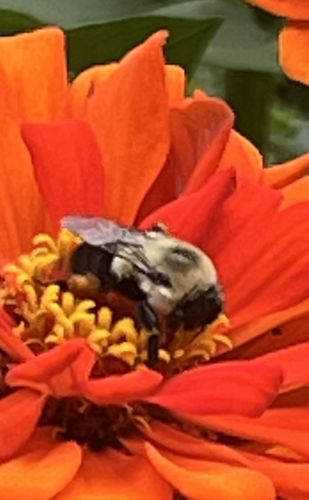Bumble Bee
Scientific Name: Bombus spp. (e.g., Bombus impatiens, Bombus terrestris, depending on region and specific species)
Order & Family: Order: Hymenoptera, Family: Apidae
Size: Typically 10-25 mm (0.4-1.0 inches) in length, varying by species and caste (queen, worker, male).

Natural Habitat
Bumble Bees can be found in a wide range of habitats where flowering plants are present, including gardens, meadows, forests, agricultural areas, and urban parks. They typically build their nests underground in abandoned rodent burrows, in dense grass, or under logs.
Diet & Feeding
Bumble Bees primarily feed on nectar for carbohydrates (energy) and pollen for protein and other nutrients. They are generalist foragers, visiting a wide variety of flowering plants.
Behavior Patterns
Bumble Bees are social insects living in colonies, typically smaller than honey bee colonies. They are known for a behavior called 'buzz pollination' or sonication, where they rapidly vibrate their flight muscles to release pollen from flowers, making them very efficient pollinators for certain plants. They are typically active during daylight hours, foraging for nectar and pollen. Queens emerge in spring to start new nests, often underground or in dense grass, and worker bees develop throughout summer.
Risks & Benefits
Risks: Bumble bees can sting if they feel threatened or their nest is disturbed. Unlike honey bees, a bumble bee can sting multiple times because their stinger is not barbed. However, they are generally not aggressive. Benefits: Bumble Bees are incredibly important pollinators for both wild plants and agricultural crops. Their pollination services contribute significantly to ecosystem health and food production.
Identified on: 8/29/2025